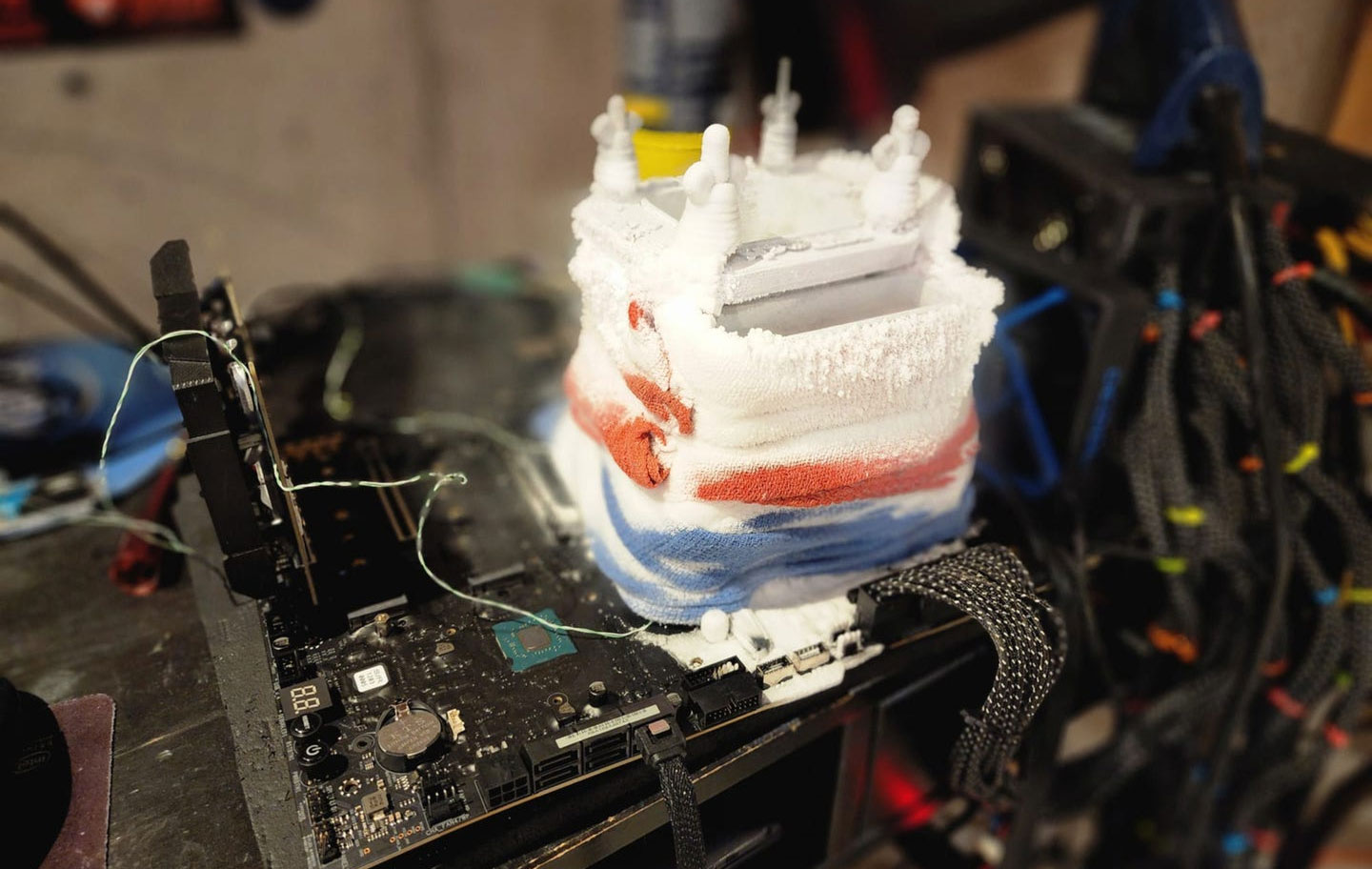Intel Core i9-12900KS Hits 7.45 GHz on LN2
And it scoops several overclocking world records.
Intel's new Core i9-12900KS processor has already been instrumental to the breaking of a number of overclocking world records. Launched yesterday, its impact has precipitated a dedicated blog post on overclocking hub HWBot. Some of the records, like the headlining achievement of 7.45 GHz using one physical core and liquid nitrogen cooling (LN2), are more academic than practical, but the processor has also shown its pedigree in benchmarks like Cinebench, Geekbench, Wprime 1024, and HWBot X265 4K which will be more indicative of application performance.
So what can the world's best overclockers achieve, using extreme and esoteric cooling methods such as the application of LN2?
Starting with the headlining feat, overclocker TSAIK has managed to coax the Core i9-12900KS to 7,450.62 MHz. The OC expert used LN2 cooling but only had one physical performance core (P-core) activated to achieve this speed. The figure represents a better than 35% overclock on stock 1C/2T boost clocks.

MSI is rather pleased that TSAIK managed to grab this important record with Intel's best gaming CPU affixed to an MSI MEG Unify-X. TSAIK is part of MSI's OC Team, and you can see MSI's pride in the above image.
Becoming the new top-end Alder Lake CPU, we reviewed the Intel Core i9-12900KS earlier this week, and it lays claim to being the fastest gaming CPU ever and it may one day feature on our Best Gaming CPUs page. The 12900KS is a Special Edition of the already potent Core i9-12900K, hence the 'S' suffix, and offers all that processor has, but benefits from being one of the best binned samples. The 12900KS runs at speeds up to 5.5 GHz on two cores and up to 5.2 GHz for all-core boosts. Intel's most advanced boost technologies really need great cooling for this CPU to reach its full potential, as highlighted in our review.
One might expect the overclocking speed world record to be faster with the Intel Core i9-12900KS than the 12900K. However, at this time, this isn't the case. Regular Tom's Hardware contributor Allen 'Splave' Golibersuch, holds the world record for overclocking an 'ordinary' 12900K to 7.6 GHz. Moreover, Splave's feat was achieved with a fully enabled 8C/16T P-cores configuration. Please remember though, it is still very early days for overclocking the 12900KS.
Splave's Core i9-12900KS (Almost) Clean Sweep
While Splave didn't grab the CPU frequency record for the new chip (yet), he dominated the new records and achievements table as featured by HWBot. Below you can see a screenshot showing the best scores for this new CPU including a handful or world records (WR) and global first place (GFP) scores.
Get Tom's Hardware's best news and in-depth reviews, straight to your inbox.
World record scores include the Cinebench 2003 16 physical core score, the Cinebench - R23 single core score, and the Geekbench 4 Multi Core (16C). For some perspective, the Cinebench 2003 world record score of 12777 achieved is a worthwhile step up from the second placed 12510 achieved using an i9-12900KF. The Geekbench score of 100675, is the first six figure score achieved in this benchmark, and the second placed entry is a score of 97800 using a Core i9-12900K.
As mentioned above, it is still early days for the Intel Core i9-12900KS and it should be behind plenty more OC achievements over coming weeks and months.

Mark Tyson is a news editor at Tom's Hardware. He enjoys covering the full breadth of PC tech; from business and semiconductor design to products approaching the edge of reason.
-
jacob249358 Whatever is in that first picture looks so cool. You have to be a real legend to passively cool a 12900ks at 7.45ghzReply -
drivinfast247 Reply
That first pic is a LN pot used to cool a CPU to sub ambient temps. It is in no way passively cooled and impossible to passively cool at those frequencies and voltages on this planet.jacob249358 said:Whatever is in that first picture looks so cool. You have to be a real legend to passively cool a 12900ks at 7.45ghz -
jacob249358 Reply
isn't it technically passively cooled because there is no fan and just a thing on it acting as a heatsink?drivinfast247 said:That first pic is a LN pot used to cool a CPU to sub ambient temps. It is in no way passively cooled and impossible to passively cool at those frequencies and voltages on this planet. -
drivinfast247 MaReply
Maybe I'm wrong about the definition of passively cooled.jacob249358 said:isn't it technically passively cooled because there is no fan and just a thing on it acting as a heatsink? -
TerryLaze Reply
No active means there is something more than just contact to the cooler air of the surrounding atmosphere that creates "coolness" this could be a fan removing the heat or some liquid that transfers the heat somewhere else or it could be LN2 which also removes heat, they all actively decrease the temps.jacob249358 said:isn't it technically passively cooled because there is no fan and just a thing on it acting as a heatsink?
Passive is only having a big slab of metal that is only cooled by the surrounding air being cooler. -
hotaru.hino Replyjacob249358 said:isn't it technically passively cooled because there is no fan and just a thing on it acting as a heatsink?
It's cooled by phase changing, or the act of LN2 boiling from the thing. As it still needs an external component (boiling LN2), I'd argue it's not passive cooling.drivinfast247 said:Ma
Maybe I'm wrong about the definition of passively cooled.

